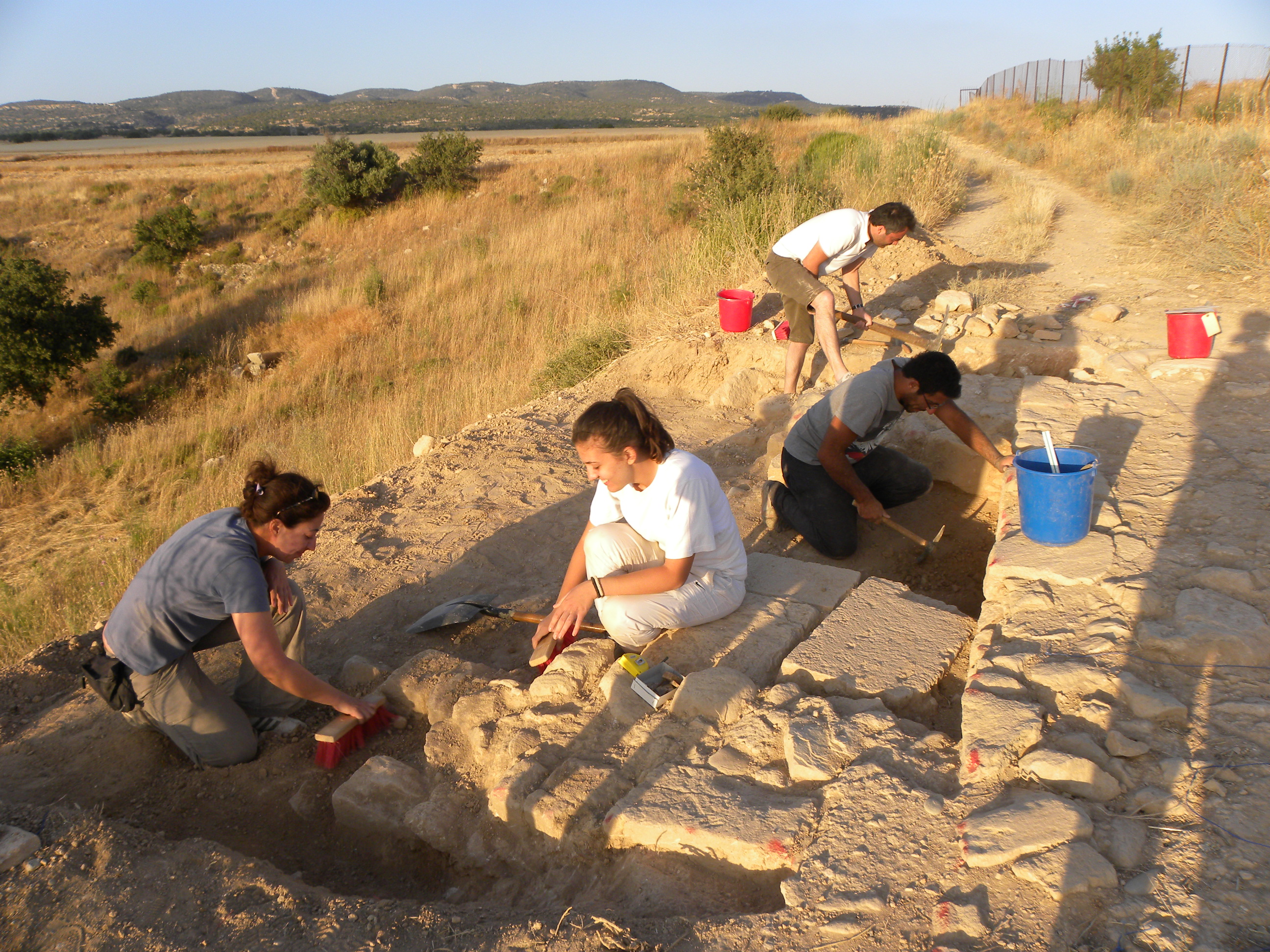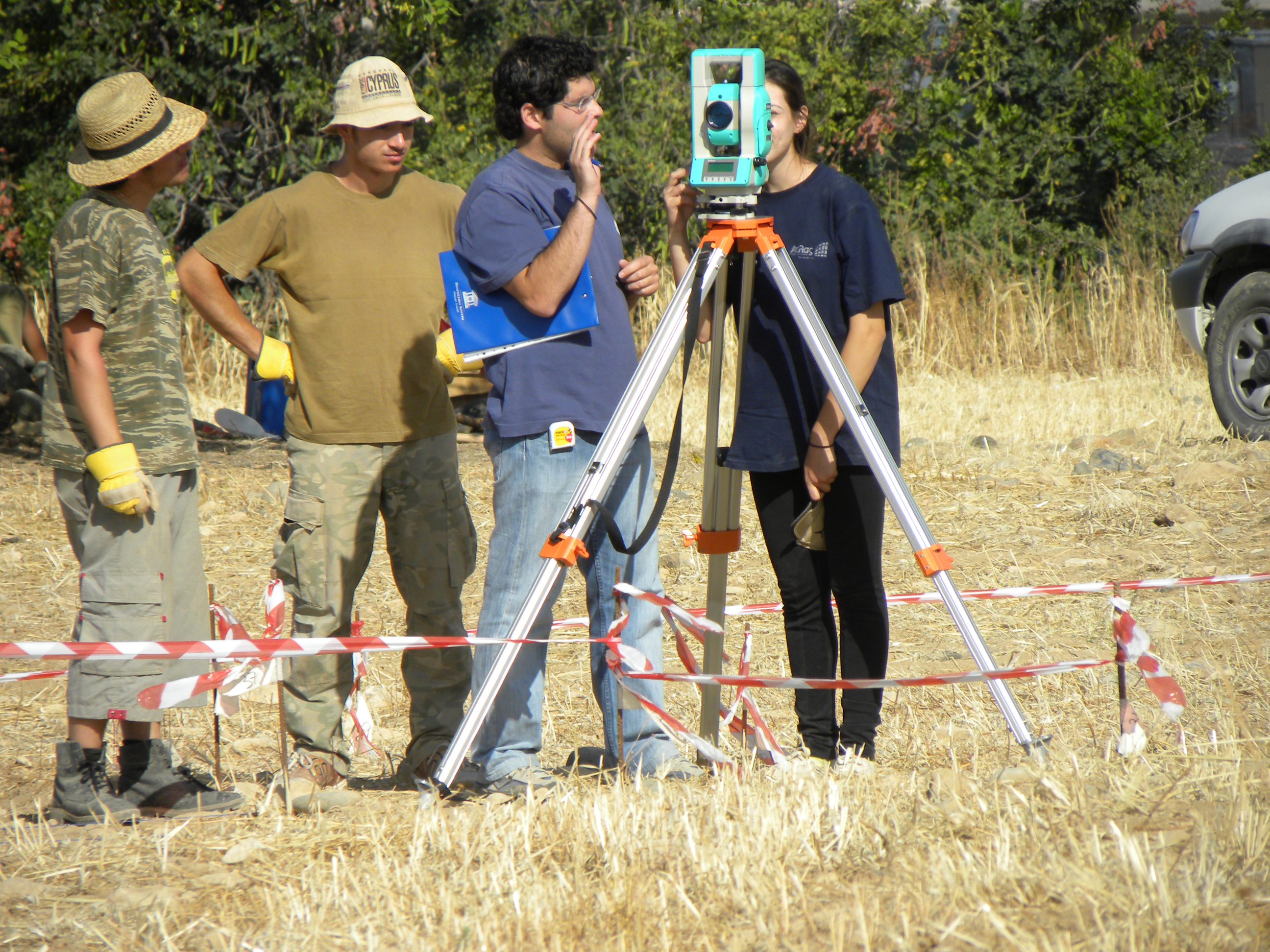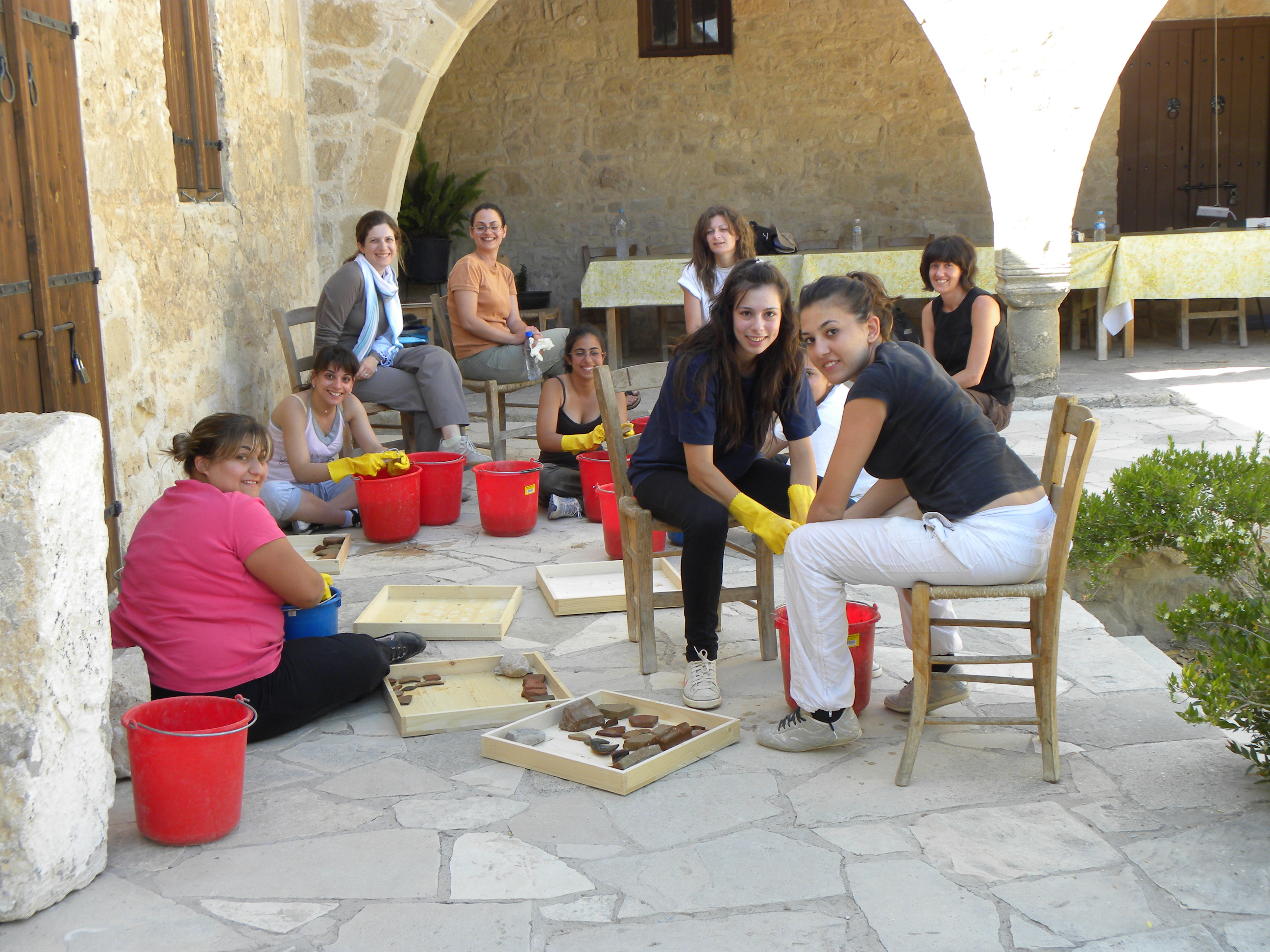|
The plateau of Hadjiabdullah was the focus of the 2009 excavation season at Palaepaphos. The 2009 fieldwork project took place between the 17th of May and 13th of June. Hadjiabdullah is located to the south of Marcello and rises at 112m. above sea level, affording an impressive and commanding view of the temenos to the west and to the coastline. A monumental administrative centre of the Cypro-Archaic, Cypro-Classical period was partially excavated in the 1950s by Mitford and Iliffe. The movable finds from the building have not been published but in 1960, Professor Jorg Schäfer, published an architectural analysis of the monument. ("Ein Perserbau in Alt-Paphos?" in Opuscula Archaeologica 3 (1960), 155-175). This palatial building was cleaned and photographed by the Swiss-German team of Professor Maier in the early 1980s. In recent years, the exquisite architecture of the Hadjiabdullah structure was rapidly deteriorating as the ashlar masonry was being dislocated by the roots of trees that grow amidst the foundations. In addition, the unexcavated north side of the plateau, which had become a dirt truck running on the edge of the cliff, was undergoing rapid erosion. Besides the urgency of having to stop the traffic of bulldozers and heavy agricultural machinery from passing over the north side of the citadel, the Hadjiabdoulla field project aspired to define the extent of the citadel on all four sides around the palace. Our aims also included the identification of the various functions for which the enclosed space was being used – storage, administrative, industrial, sacred. Finally, the Hadjiabdullah expedition aspired adding some insight into the time span of the plateau's use as a prominent political statement of the kingdom of Paphos. |
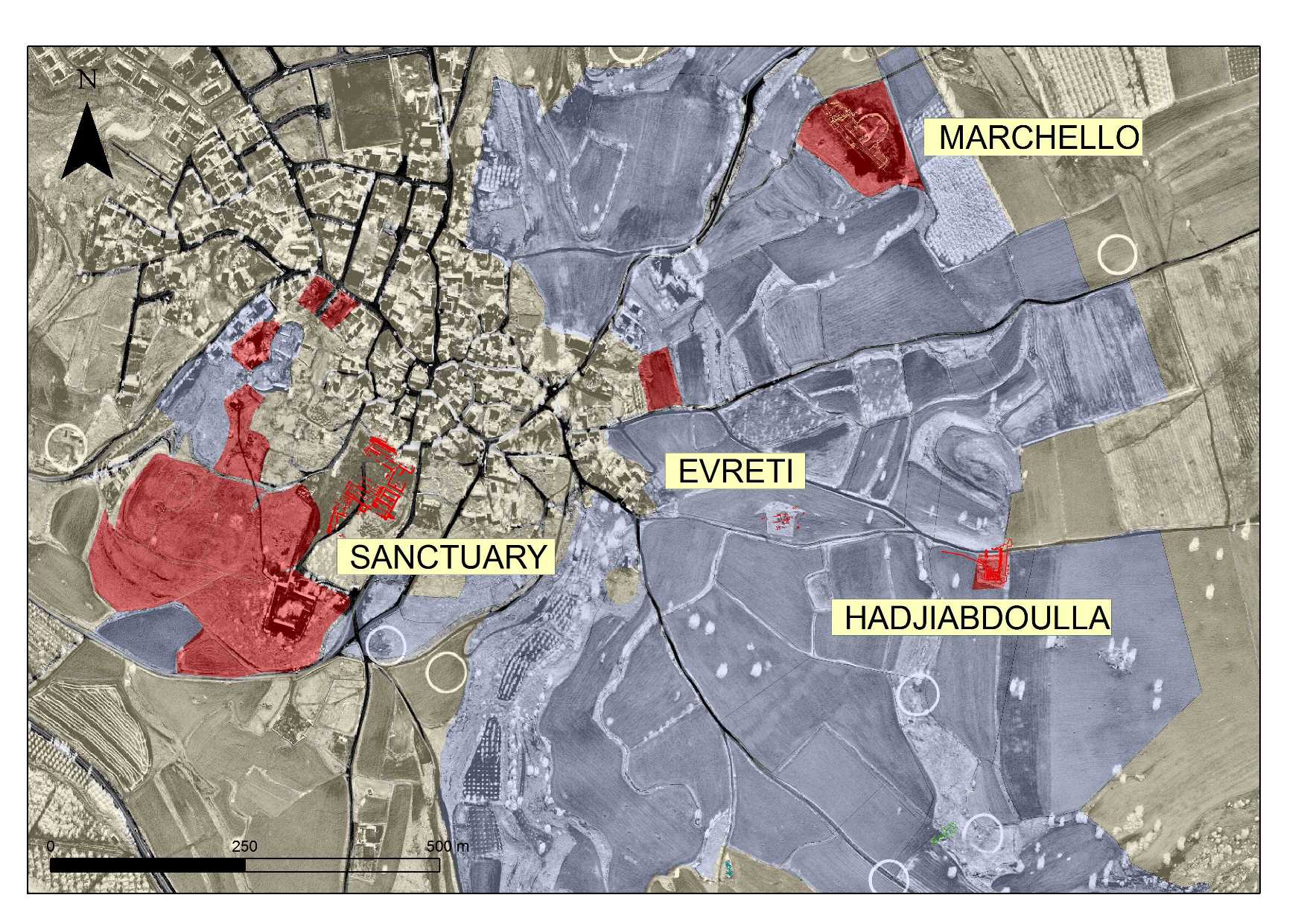 |
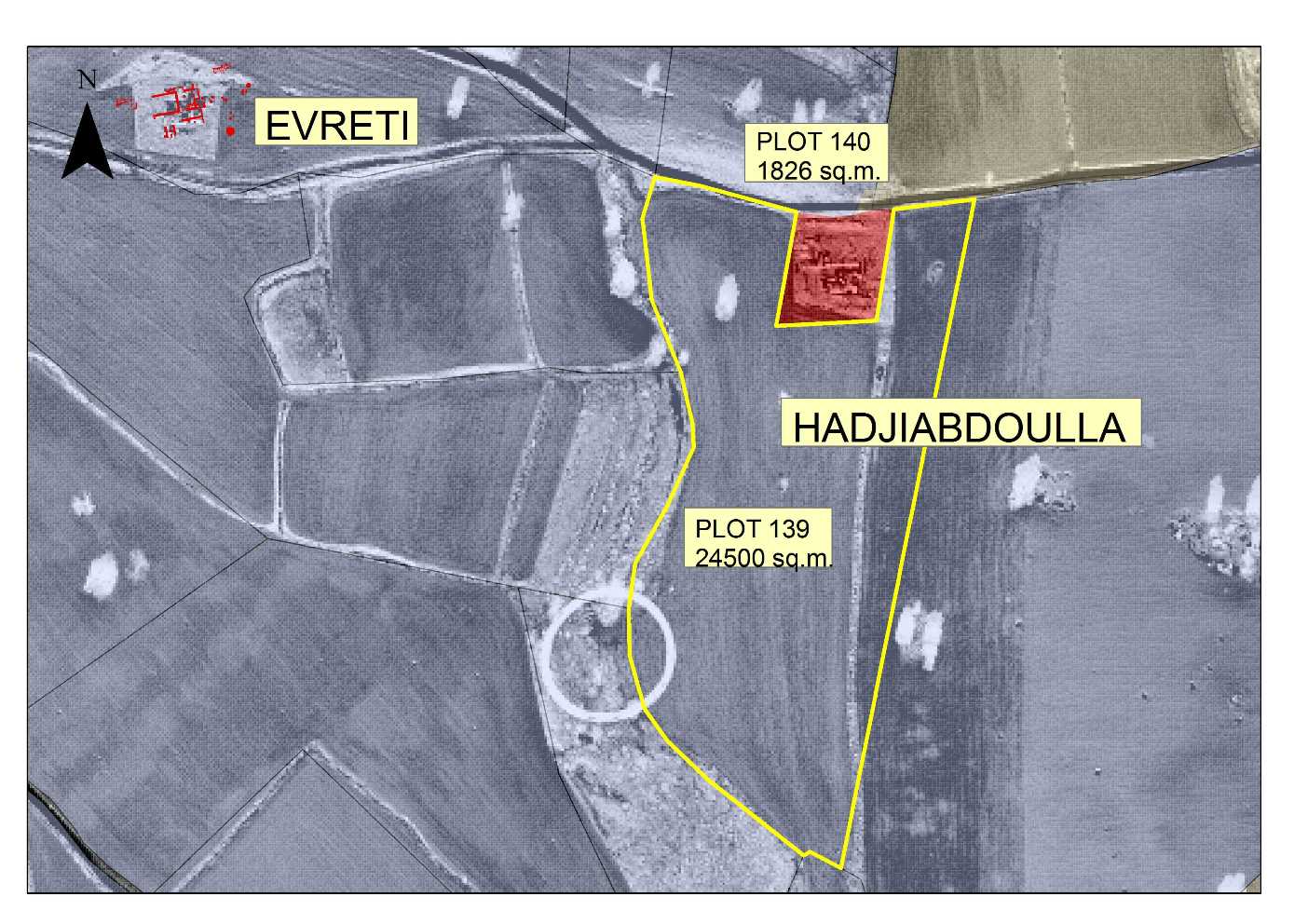 |
| Based on these priorities, the 2009 fieldwork season at Palaepaphos defined three distinct areas of investigation on top of the Hadjiabdullah plateau.
AREA 1: In the first area, the target was to uncover representative sections of the main north wall of the citadel, which had been partially exposed and apparently backfilled in the 1950s, and to trace it to the west end of the terrace. This target was achieved in four squares opened in Area 1. The width of the wall was established at three metres. |
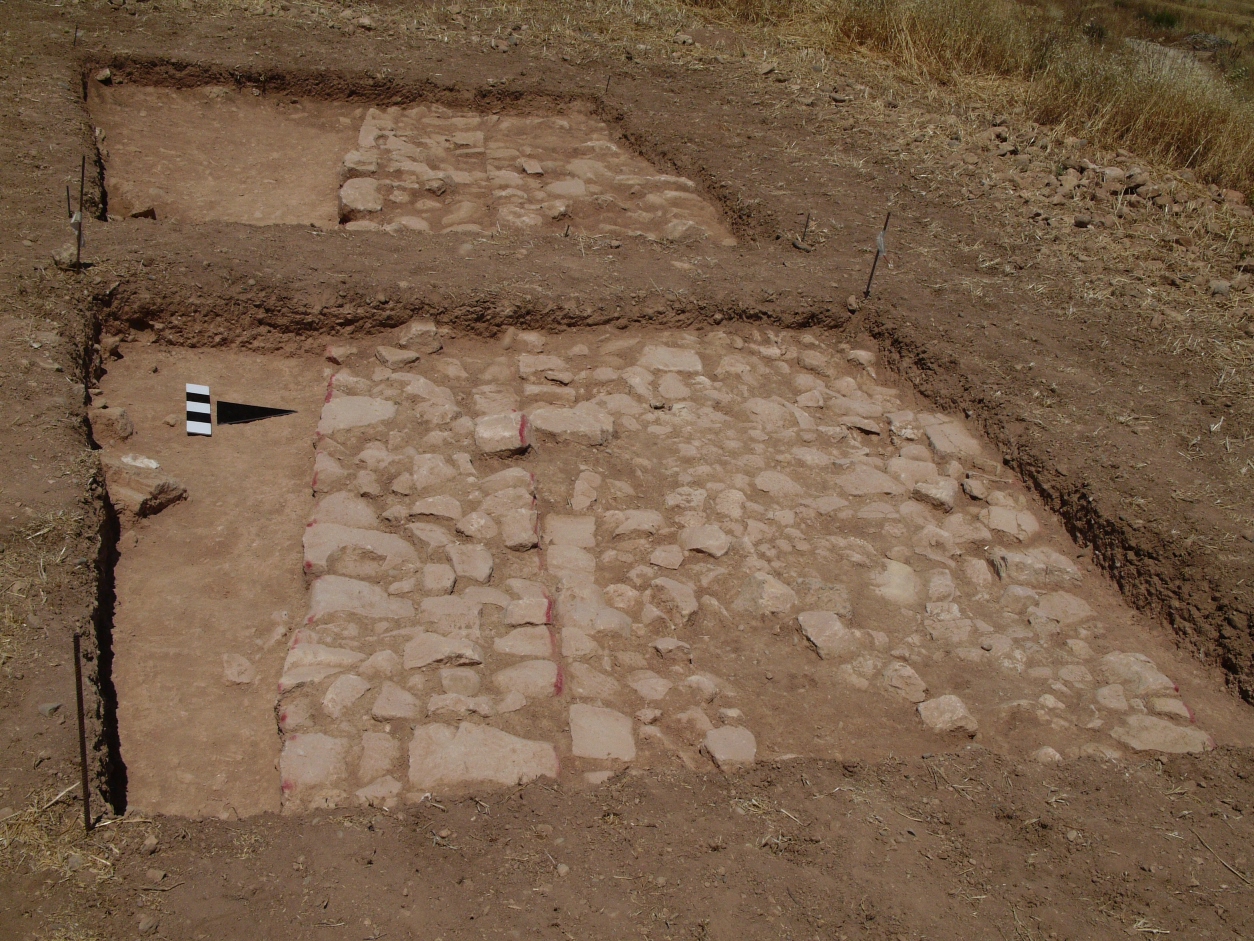 |
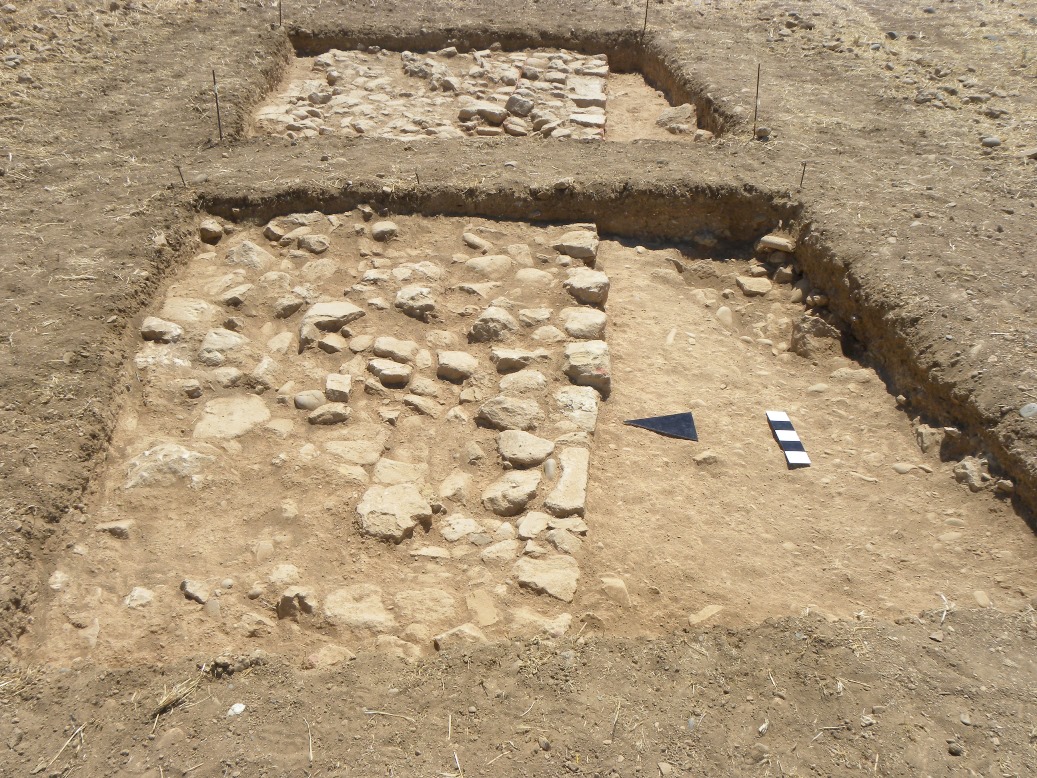 |
| AREA 2: The target of the second area was more complex: from the main wall we proceeded north towards the dirt road in order to expose what looked like narrow 70-80 cm. cross sections. We established that they were built against the exterior face of the main wall, and joined to the north by a narrow curtain wall that runs east-west less than two metres from the sharp edge of the cliff. The space formed in between was packed with rubble. Unlike the cross-sections which were made of rubble and reused materials, the curtain wall is very well constructed with worked blocks that were traced down to 1.30 cm. This level contained pottery and roof tiles in an ashy layer, partially sealed under hard mortar. The baulk of the ceramic material retrieved from Areas 1 and 2 at Hadjiabdullah belongs to the end of the Classical period and the beginning of the Hellenistic. Imported transport amphorae and large roof tiles that fit into the Late Classical-Early Hellenistic horizon were also identified. |
| AREA 3: This area is located to the south of the fenced palatial monument. Area 3 revealed an impressive amount of Late Bronze Age pottery fragments. The corpus included not only finewares, such as White Slip, Base-ring wares and White Painted Wheelmade III wares, but also utilitarian vessels (Teratsoudhia ware and Plain White ware). In addition, a number of large storage vessels were unearthed in this area. An important find of the 2009 season was a handle fragment of a small pithos or pithoid jar bearing the impression of a rolled cylinder seal. The seal depicts two fighting bulls with interlocked horns, and a robed human figure behind one of the two bulls trying to separate them. Cylinder seal impressions are connected to the administration of agricultural produce. They were found at other Late Cypriot sites, such as Alassa, Maa-Palaeokastro and Episkopi. |
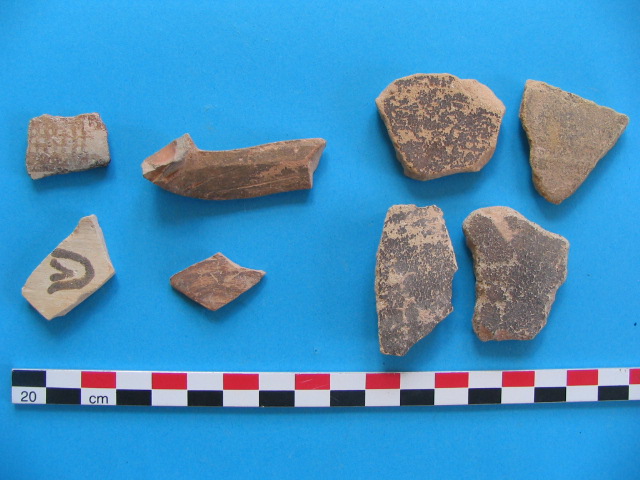 |
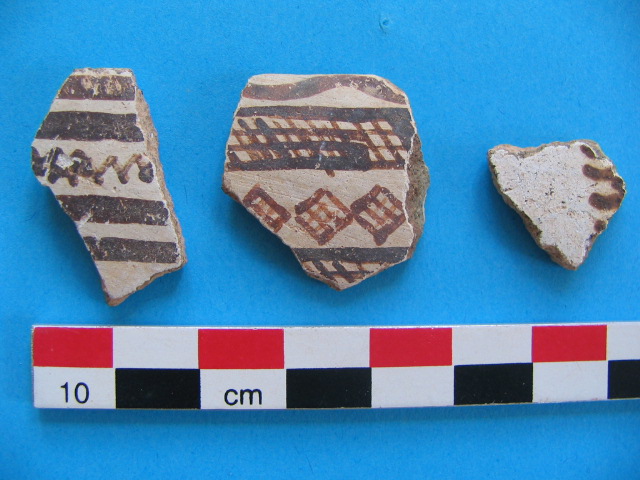 |
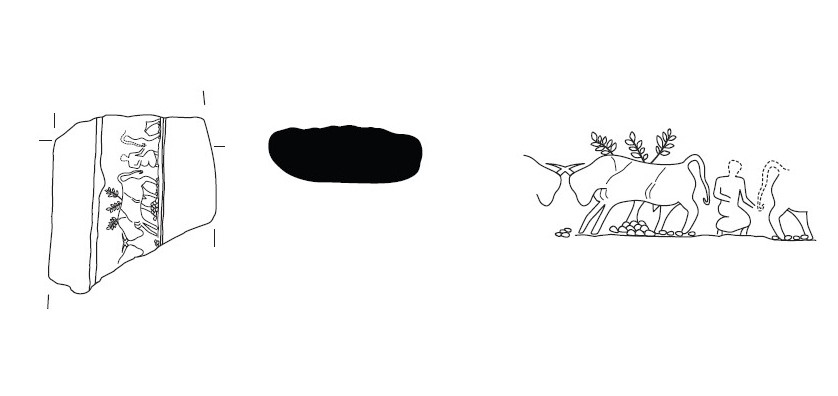 |
| Τeam 2009 |
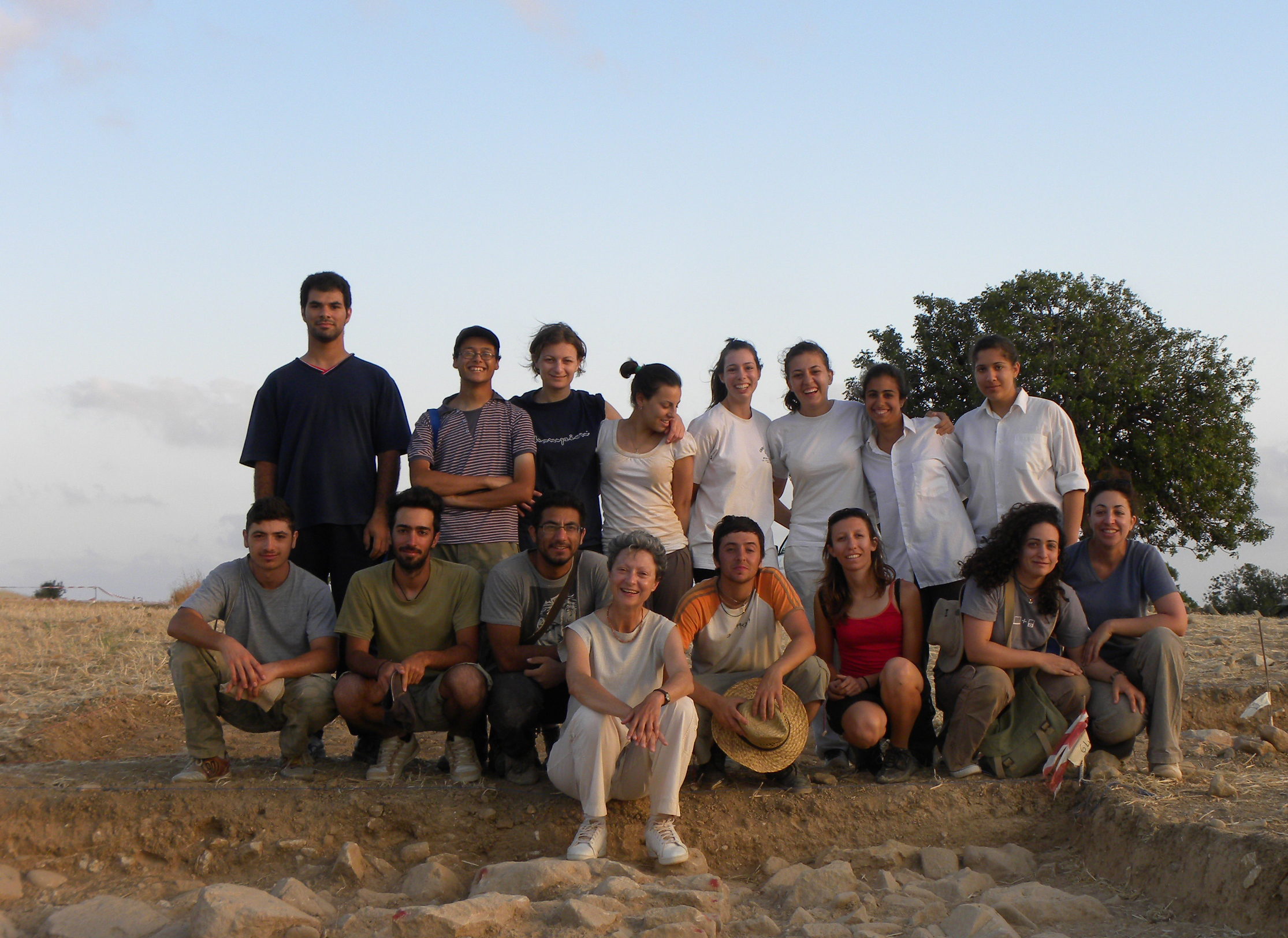 |
| Maria Iacovou
Anna Satraki
Artemis Georgiou
Stella Diakou
Ariane Jacobs
Athos Agapiou
Anna Georgiadou
Alexia Papadopoulou
Eleni Flouri
Eleftheria Eleftheriou
Eleni Athanasiou
Constantina Alexandrou
Pantelitsa Mylona
Maria Vrachnou
Charalambos Petsas
Chrysanthi Kyriakou
Panagiota Charalambous
Stella Phoivou
Panagiota Nicolaou
Dimitris Startidakis
Chrysostomos Pashiardis
Sergios Menelaou
Michalis Koullapis
Onoufrios Oikonomides
Savvas Stavrou
|
Director, Professor in Archaeology, University of Cyprus
Assistant Director, PhD Candidate, University of Cyprus
D.Phil Candidate, University of Oxford
PhD Candidate, Bryn Mawr College
PhD Candidate, Vrije Universiteit Brussels
Topographer, PhD Candidate, University of Cyprus
PhD Candidate, Aix en Provence University
Undergraduate Student, University of Cyprus
Undergraduate Student, University of Cyprus
Undergraduate Student, University of Cyprus
Undergraduate Student, University of Cyprus
Undergraduate Student, University of Cyprus
Undergraduate Student, University of Cyprus
Undergraduate Student, University of Cyprus
Undergraduate Student, University of Cyprus
Undergraduate Student, University of Cyprus
Undergraduate Student, University of Cyprus
Undergraduate Student, University of Cyprus
Undergraduate Student, University of Cyprus
Undergraduate Student, University of Cyprus
Undergraduate Student, University of Cyprus
Undergraduate Student, University of Cyprus
Undergraduate Student, University of Cyprus
Undergraduate Student, University of Cyprus
Undergraduate Student, University of Cyprus
|
||


